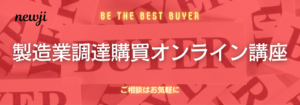- お役立ち記事
- Development and application range of vacuum-free low temperature laser printing technology

Development and application range of vacuum-free low temperature laser printing technology

目次
Introduction to Vacuum-Free Low Temperature Laser Printing Technology
Vacuum-free low temperature laser printing technology is a cutting-edge advancement in the printing industry.
This technology offers remarkable benefits over traditional printing methods, addressing many limitations that have persisted in the field.
As industries seek more efficient and environmentally friendly solutions, this innovative approach has garnered significant interest.
Understanding Vacuum-Free Low Temperature Laser Printing
At its core, vacuum-free low temperature laser printing utilizes lasers to print materials at lower temperatures than conventional methods require.
Unlike traditional printing, this approach does not depend on a vacuum environment.
This is crucial because it reduces energy consumption and simplifies the printing process, making it more efficient and cost-effective.
How It Works
The process begins with a laser beam that hits a photoconductive drum, creating an electrostatic image.
This takes place in a normal atmospheric environment, eliminating the need for a vacuum.
Toner is then applied to the drum, adhering only to the charged areas, after which the paper or chosen substrate is passed under the drum to transfer the image.
Finally, low-temperature fusing techniques are used to bond the toner to the substrate, resulting in a high-quality print.
Benefits of Vacuum-Free Low Temperature Technology
There are numerous advantages to adopting this technological approach:
– **Energy Efficiency**: Operating without a vacuum and at lower temperatures offers significant energy savings compared to conventional methods.
– **Cost Reduction**: By eliminating the need for a vacuum and using less energy, operational costs decrease.
– **Environmental Impact**: Reduced energy consumption and the potential to use environmentally friendly substrates without degradation play into sustainability goals.
– **Material Compatibility**: Low temperature laser printing can accommodate a wider variety of materials, including heat-sensitive ones that could be damaged by traditional, high-temperature printing.
Applications in Various Industries
The versatility of vacuum-free low temperature laser printing technology finds applications in a variety of sectors:
Packaging Industry
This technology is revolutionizing the packaging industry by allowing for high-quality prints on diverse materials like plastics, recycled materials, and even flexible packaging.
The ability to print on materials that cannot withstand high temperatures opens new design and sustainability opportunities in packaging.
Electronics Sector
In electronics, the capability to print circuits on flexible and thin substrates without damaging sensitive components is crucial.
Vacuum-free low temperature laser printing supports the production of flexible electronics, a growing field driven by the demand for curved and foldable devices.
Textile Industry
For the textile industry, maintaining the integrity of the fabric during the printing process is vital.
This technology allows designers to print vibrant, detailed designs on textiles without compromising the fabric’s quality, enabling unique fashion innovations.
Medical Field
The medical field benefits from this technology in the development of customized medical devices and implants.
Printing on specific biocompatible materials without altering their properties can lead to better patient-specific solutions.
Challenges and Future Developments
While vacuum-free low temperature laser printing technology offers many advantages, challenges remain.
Achieving consistent quality when scaling up the process is an area requiring more research and development.
There’s also a need to refine the technology to make it more accessible and economically feasible for various industries.
Further advancements are expected to focus on enhancing the speed and resolution of prints, improving material compatibility, and reducing costs even more to increase competitiveness with traditional methods.
With these enhancements, vacuum-free low temperature laser printing will likely become a mainstream choice for many industries.
Conclusion
Vacuum-free low temperature laser printing technology represents a significant step forward in the printing industry.
Its applications across various sectors highlight its broad potential to transform product manufacturing and design.
As research continues and technology advances, it will likely play a critical role in creating sustainable and innovative printing solutions.
This technology not only meets the needs of current markets but also opens new opportunities for future advancements.
 資料ダウンロード
資料ダウンロード
QCD管理受発注クラウド「newji」は、受発注部門で必要なQCD管理全てを備えた、現場特化型兼クラウド型の今世紀最高の受発注管理システムとなります。
 NEWJI DX
NEWJI DX
製造業に特化したデジタルトランスフォーメーション(DX)の実現を目指す請負開発型のコンサルティングサービスです。AI、iPaaS、および先端の技術を駆使して、製造プロセスの効率化、業務効率化、チームワーク強化、コスト削減、品質向上を実現します。このサービスは、製造業の課題を深く理解し、それに対する最適なデジタルソリューションを提供することで、企業が持続的な成長とイノベーションを達成できるようサポートします。
 製造業ニュース解説
製造業ニュース解説
製造業、主に購買・調達部門にお勤めの方々に向けた情報を配信しております。
新任の方やベテランの方、管理職を対象とした幅広いコンテンツをご用意しております。
 お問い合わせ
お問い合わせ
コストダウンが利益に直結する術だと理解していても、なかなか前に進めることができない状況。そんな時は、newjiのコストダウン自動化機能で大きく利益貢献しよう!
(β版非公開)






